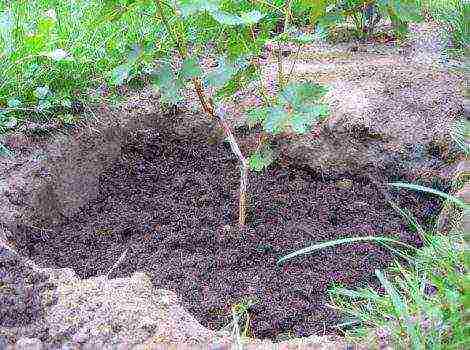Content
- 1 Description of boxwood
- 2 Planting and growing boxwood in the open field
- 3 Wintering boxwood in the suburbs
- 4 Boxwood as a houseplant
- 5 Reproduction of boxwood
- 6 Boxwood in landscape design
- 7 List of poisonous plants
- 8 List of plants to be treated with caution
- 9 Folk signs: what is possible, what is not?
- 10 Feng Shui
- 11 Conclusion
Evergreen boxwood (Buxus) can grow indoors and outdoors. However, in the Moscow region, rarely does anyone successfully grow it in the open air. Nor have I seen hedges made of boxwood bushes. Another thing is the tub version, in which the pots with boxwood are exposed in the spring to fresh air, and for the winter they are transferred to closed rooms.
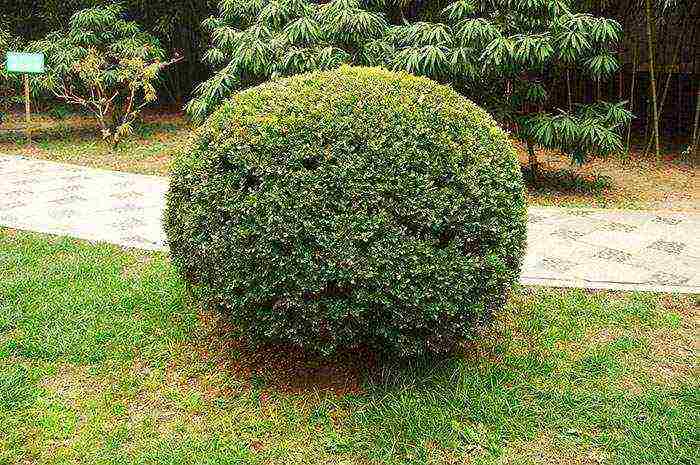
Evergreen boxwood
Description of boxwood
There are two popular types: common boxwood, or evergreen, (B. sempervirens) and small-leaved (B. microphylla), both from the Boxwood family. There are other types of boxwood. Colchis boxwood (B. colchica) is listed in the Red Book of several countries. Buksus thrives in Southern Europe and Southeast Asia. It is hard to imagine the Mediterranean without this evergreen. He is comfortable in the Transcaucasia and the Caucasus. In the south of Russia, near the Khosta River, there is a small boxwood grove. There used to be real boxwood forests. In Sochi, bush bushes are planted in many parks and near houses.
Boxwood is a slow-growing evergreen shrub or tree up to 8 meters high, rarely higher. There are undersized species and varieties (dwarf variety "Compacta"). The bark is grayish-yellow, with shallow depressions and cracks. The yellowish wood is heavy and super dense, which explains the name of the plant (Greek "buxe" - "dense"). Molds for engravings are cut out of it. The wood is so hard that it used to be used to make bearings.
Leaves 2 - 3 cm long are opposite. They are leathery, dark green with a light green underside. Small female and male flowers bloom in early spring. Fruits are small folded capsules. Seeds are black, ripen in early October. When describing boxwood, one cannot but recall its special aroma. The smell intensifies after watering and cutting bushes. You can feel it if you knead the leaf with your fingers. For me, this is one of my favorite tart scents, but many people don't like it.
Boxwood is a poisonous plant... This must be taken into account when choosing a place for it. You can not plant bushes in playgrounds, decorate playrooms with them.
Planting and growing boxwood in the open field
My advice: buy seedlings or grown plants only in containers, i.e. with a closed root system. They should be bushy with green leaves and shoots. At risk are seedlings with yellowed leaves and bare shoots.
Spring is the best time to plant boxwood on the site. The hole should be twice the volume of a clod of earth with the roots of a seedling. At the bottom of the planting pit or trench, it is advisable to put compost in a layer of 10-15 cm, then mix it with earth, sand and water. Boxwood does not like acidic soils, so it is advisable to add wood ash to the soil mixture.
You should not straighten the roots of a plant taken out of a pot. Another thing is a seedling whose roots are wrapped in foil before being sold. They need to be straightened, examined and lowered into a bucket of water. A root formation stimulator is preliminarily dissolved in it (strictly according to the instructions) or the clay is stirred.
To create a hedge or screen, seedlings are planted in planting trenches at a distance of 30-40 cm from each other. Planting depth is the same as in the pots. After planting, you need to make low sides around the crown, water and mulch the soil.The mulch should not touch the trunk.
At first, the seedling is shaded, protecting it from the burning rays of the sun. It is sprayed with clean water, after watering, the soil is loosened superficially and the crown is treated once with Epin.
Boxwood, especially young plants, requires regular watering. More resilient mature shrubs and trees can be watered less frequently.
The seedling should not be fed until it takes root and begins to grow. Summer top dressing - full complex fertilizer, autumn - superphosphate and potassium salts.
When choosing a place, they are guided by the fact that species and varieties with green leaves grow better when shaded. Partial shade is suitable for them. In the shade, the bushes will be looser, with long internodes. Varieties with variegated foliage require a lighter spot.
Wintering boxwood in the suburbs
In the Moscow region, buksus does not endure winters in the best way, although it is considered relatively resistant to cold. It is ruined by prolonged frosts when the air temperature drops below minus 20 ° C. Krona is dried up by icy winds. The bright spring sun burns the foliage. Under these conditions, the plant can die very quickly. Perhaps this is why many professional landscape designers rarely take up the planting of boxwood in the plots of their regular clients. Unless, of course, special conditions have been created for this plant.
One of the serious problems in winter is the lack of moisture, which is difficult for the roots to extract from the frozen soil. This also leads to the death of the plant. It is imperative to carry out water-charging (water-charging) watering in late autumn. One landscape designer told me that good watering of the ground under the bushes with very warm (almost hot) water helps to preserve boxwood bushes during the winter thaws. This technique allows the roots to absorb moisture from the partially thawed soil. I didn't have to use this advice, but I took note of it.
A familiar summer resident has been successfully growing boxwood bushes for more than five years. They spend the winter with him without shelter. Boxwood grows on a plot in a semi-shady place protected from the wind, where a lot of snow accumulates in winter. Coniferous plants protect it from the rays of the low winter sun. When mulching the soil, black pine needles are used. During the freezing rain, the boxwood was practically not damaged.
My deplorable experience associated with the death of several box trees left to winter on the site. I insulated and covered them, but long frosty periods led to the fact that the plants either dried up or remained half-dead, requiring serious resuscitation. The catch lies in the fact that boxwood tolerates relatively warm winters well, so we consider this culture to be winter-hardy even in the Moscow region. But a harsh winter sets in, and the initially heat-loving plant dies. From time to time, I resumed trying to grow boxwood in the Moscow region under the open sky. The maximum success is the cultivation of one buxus on the site for four years, after which in the spring a bush about 90 cm high began to dry. He suffered not so much from frost as from damping off in late winter - early spring. Stunted junipers died in many areas that year. My adult yew was also badly damaged.
Boxwood as a houseplant
The flower shops sell boxwood in flower pots. It can be grown at home. In the garden center, I was advised in the spring to bury a pot of boxwood in the ground, and in late autumn to move it to a cool room. For example, in the basement of a house with an upper window, a glazed balcony, a veranda, etc. I remembered prints and photographs of boxwood, which in the old days was often grown in tubs. In the spring they were exhibited at the front door, and in the winter they were kept in the winter gardens.
A few years ago, I saw a perfectly formed box tree for sale growing in a large flower pot. I could not pass by and became the owner of two such plants at once.
When growing in the house, I ran into some problems. First of all, boxwood turned out to be a more moisture-loving plant than I thought. It not only has to be regularly watered, but also sprayed on the crown. Even short-term drying of the soil leads to drying out and loss of leaves.
There are no problems with feeding, because loose soil in a pot facilitates the assimilation of complex fertilizers for evergreens. Fertilizer for ficuses is also suitable.
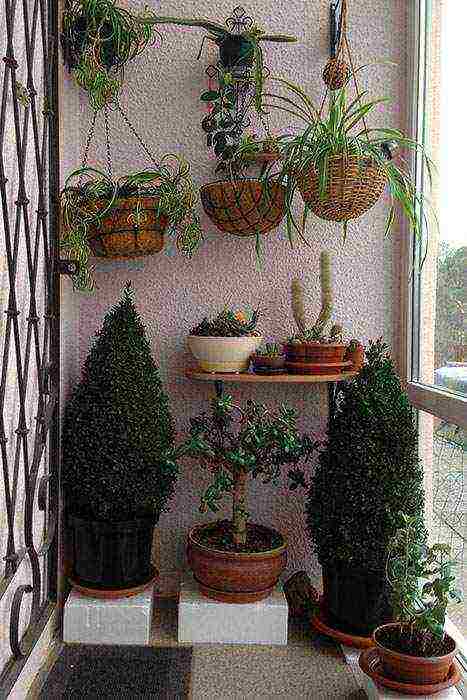
Our two boxwood trees winter on the loggia
A pot with boxwood should not be kept without shading on the windowsill on the south side of the house. In winter, I keep boxwood on a glazed loggia, where the air temperature at night does not drop below + 12 ° C.
Reproduction of boxwood
In nature, buxus reproduces by seeds. For us, the easiest option is to root cuttings. The rooting rate is about 80%. Cuttings 10 - 15 cm long are suitable, cut in summer (late June - mid July) and autumn (late August - early September). They leave a few upper leaves, all the lower ones are removed. Better if the cut is oblique. Immediately stick into a moistened soil mixture of peat and sand or into another light substrate. Root stimulants can be used. Then spray and cover with a jar or transparent bag so that the leaves do not touch the polyethylene. Under such a shelter, with regular moistening of the soil and spraying, the roots appear on average in a month. After two months, the seedling is ready for transplanting to a school or to a permanent place. For the winter, it is covered with spruce branches.
Cuttings that have begun to root at other times may form worse roots. Autumn cuttings are best rooted in flower pots and kept indoors in winter.
Boxwood in landscape design
Boxwood, like yew, is ideal for curly haircuts. A variety of shapes are obtained from it: balls, cubes, cones and spirals. Heavy pruning is done in mid-June. You can adjust the shape at any time, except for autumn and winter. April is the best month for the first pruning of the year. The last haircut is best done in mid-August so that the plant has time to prepare for winter. Several cut twigs can be placed under the pillow to enjoy a pleasant sleep.
Large boxwood pots look good at the entrance to the house. The balls from the evergreen buxus growing near the porch look spectacular. They are considered a talisman against envious people and evil spirits.
Boxwood is an ideal plant for hedges. But in the middle lane this is a risky option that requires regular "repair". Some of the dried or bald bushes will have to be replaced with new ones from time to time. For low evergreen hedges and landscape designers, a vertically growing boxwood tree (eg Suffruticosa) is recommended. Slow-growing frost-resistant "Blauer Heinz" with bluish leaves is used for living patterns, ornaments and borders.
Some figures (balls, hemispheres, cubes, etc.) are easier to grow from several seedlings planted nearby.

Green boxwood cones
Boxwood is a slow-growing plant, but it has species and varieties that give annual growths of more or less than 8 cm. Regular cutting thickens the crown, and planting in excessively nutritious soil and rare pruning makes the bush looser.
Among box trees there are "giants" and "dwarfs". You can pick up fast-growing or slow-growing varieties. Interesting variegated forms were bred ("Elegance" variety). The fast growing ("Winter Gem micropholia" and "Sempea") plants are worth noting, which can be used to hone the art of creating green shapes. B. Faulkner microphylia ”is a natural spherical crown, the shape of which can only be corrected occasionally. For bonsai cultivation, the best choices are the Harlandii Hance and Curly Locks with curved stems.
♦ Heading: Trees and Shrubs.
♥ Tags: boxwood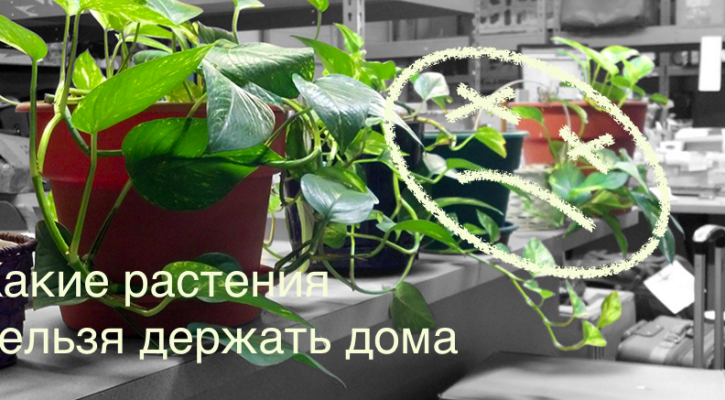
Buying another flower, we do not even know about some of the harmful properties of indoor plants, and then suddenly we notice emerging health problems. If a small child or animals live in the house, then you need to pay special attention to the choice of indoor flowers and plants in order to secure their life. Some plant species contain poison in their juice or release harmful substances into oxygen.
In addition to plants that are not recommended to be kept at home, there is an adverse effect on the human body of some flowers. In this case, you need to correctly choose the location of the future green resident, without placing him in the bedroom or, conversely, in the kitchen.
There are a lot of disputes and disagreements about dangerous plants in the house. All sayings are mixed with various signs that can eventually confuse a novice gardener.
In this article, we'll take a look at the plants to be careful with and be aware of the likely effects on the body and energy.
List of poisonous plants
This group of plants includes those species that should not be kept at home, especially in the presence of animals or children due to extremely dangerous properties. A child, like a pet, is capable of poisoning with similar flowers or getting burns if handled carelessly.
If there are no children and animals in the house, then take precautions when caring for such plants. Be sure to wear gloves when handling these colors and rinse tools thoroughly. Do not under any circumstances cut these flowers with a knife intended for food in your kitchen.
Consider this group of plants:
- Dieffenbachia (Dieffenbachia).
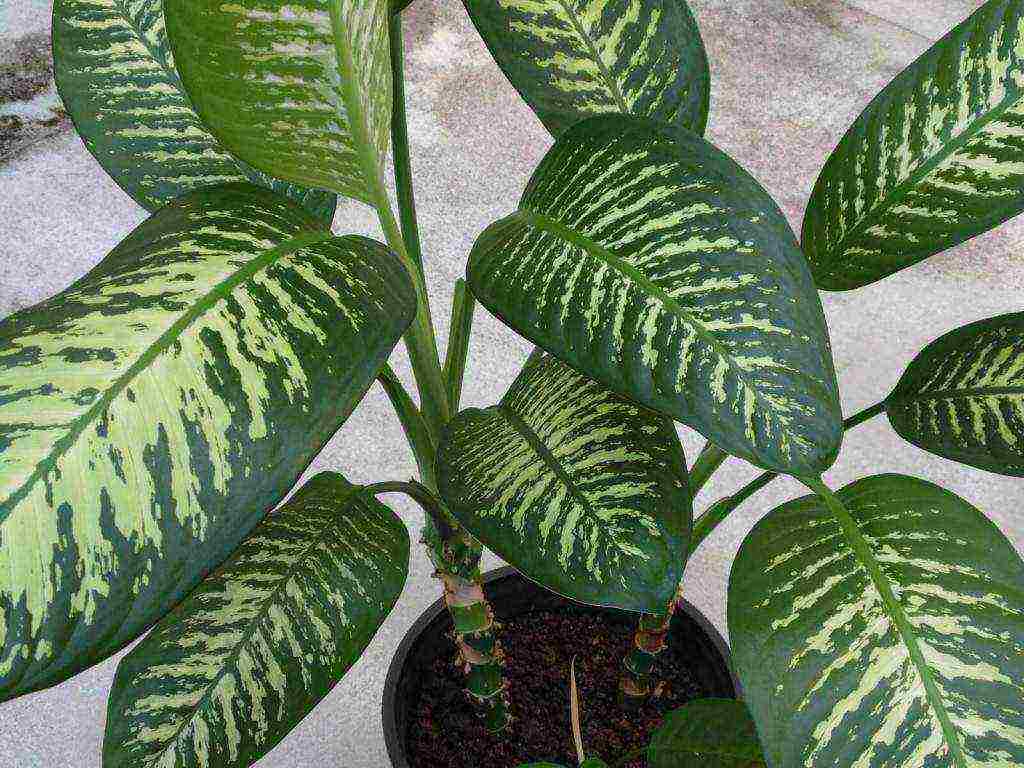 A popular indoor plant that attracts flower growers with huge yellow-green leaves that form a fluffy crown. The flower is dangerous for its sap, which is released when the leaves or stem are cut. If a pet or a child decides to chew any part of this flower, then the juice that gets into the body will cause severe poisoning. In addition, dieffenbachia juice causes burns and irritation to the skin.
A popular indoor plant that attracts flower growers with huge yellow-green leaves that form a fluffy crown. The flower is dangerous for its sap, which is released when the leaves or stem are cut. If a pet or a child decides to chew any part of this flower, then the juice that gets into the body will cause severe poisoning. In addition, dieffenbachia juice causes burns and irritation to the skin. - Oleander (Nerium oleander).
 Popular for its bright crimson flowers. The ingestion of oleander juice into the body causes blindness. The scent of a flowering plant contributes to dizziness and feeling unwell.
Popular for its bright crimson flowers. The ingestion of oleander juice into the body causes blindness. The scent of a flowering plant contributes to dizziness and feeling unwell. - Euphorbia (Euphorbia).
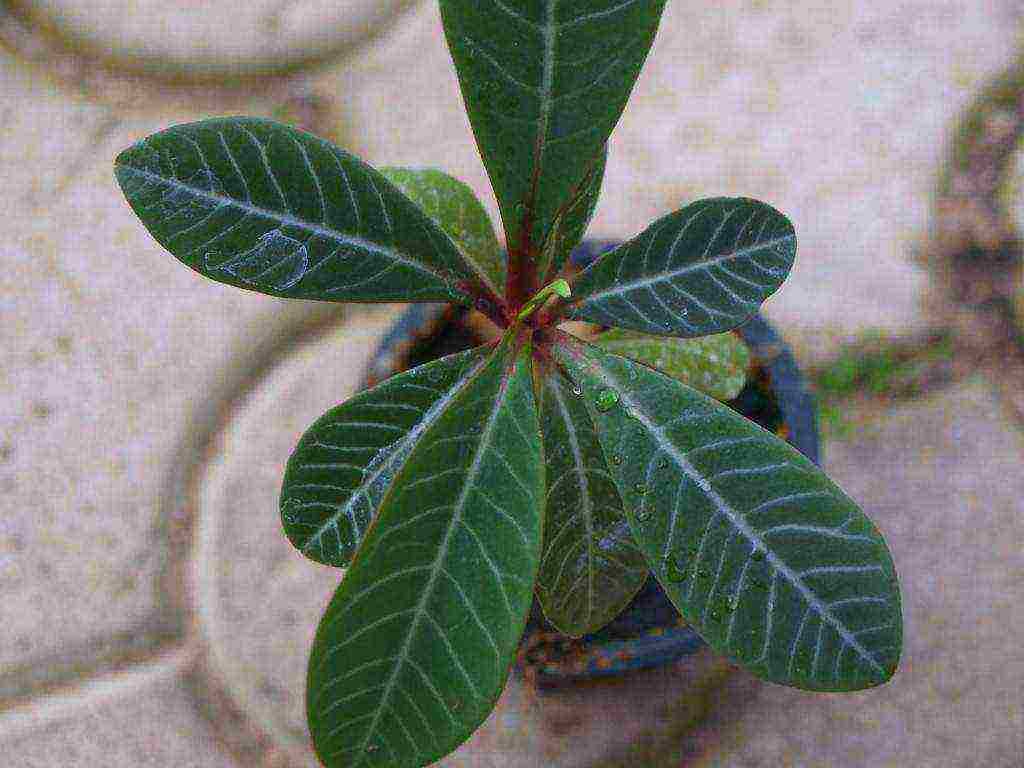 This plant is represented by a huge number of species and various forms, therefore, it cannot be described unequivocally. Many representatives are similar in appearance to cacti and have thorns, the prick of which is also dangerous for a living organism. Euphorbia contains white sap in its stem and leaves, which causes burns and irritation to the skin. When ingested, it causes poisoning.
This plant is represented by a huge number of species and various forms, therefore, it cannot be described unequivocally. Many representatives are similar in appearance to cacti and have thorns, the prick of which is also dangerous for a living organism. Euphorbia contains white sap in its stem and leaves, which causes burns and irritation to the skin. When ingested, it causes poisoning.
By the way, on our website there is a great article about caring for this plant, so we recommend that you read it!
- Croton.
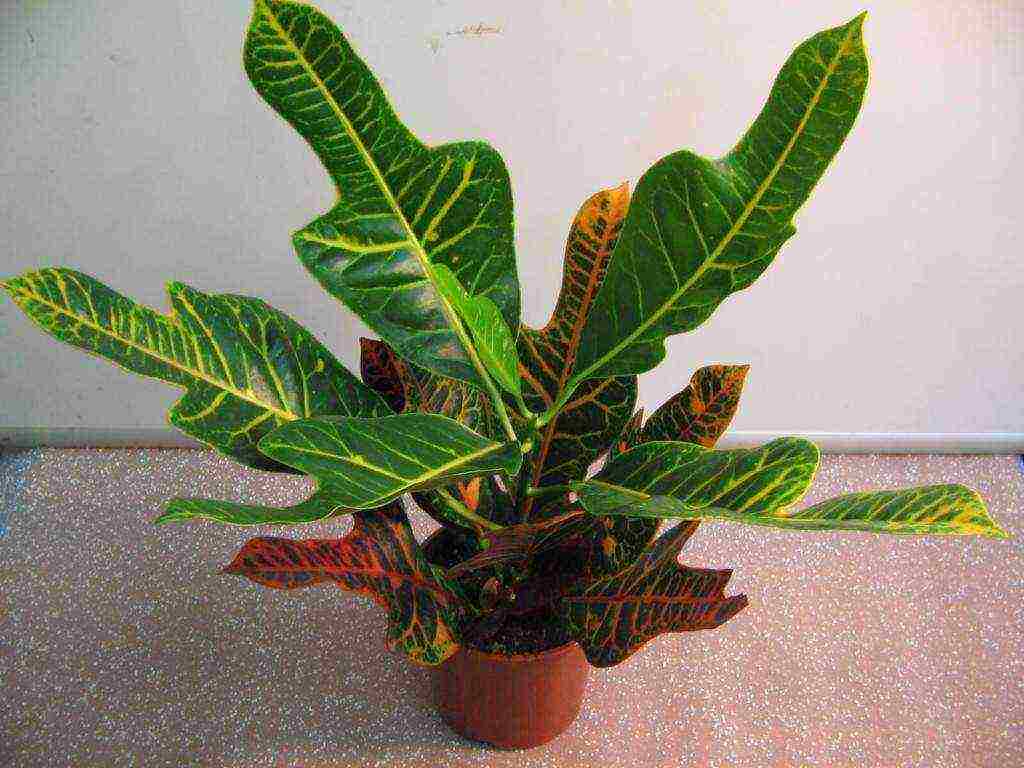 If we talk about this plant, which belongs to the euphorbia family, then it looks like a small tree with variegated leaves that have an elongated shape. Its flowers are inconspicuous, and it rarely blooms at home. The sap of this plant causes burns on the skin. If the juice gets into the bloodstream when cut or ingested, then the case may end in death or resuscitation.
If we talk about this plant, which belongs to the euphorbia family, then it looks like a small tree with variegated leaves that have an elongated shape. Its flowers are inconspicuous, and it rarely blooms at home. The sap of this plant causes burns on the skin. If the juice gets into the bloodstream when cut or ingested, then the case may end in death or resuscitation. - Azalea (Azalea).
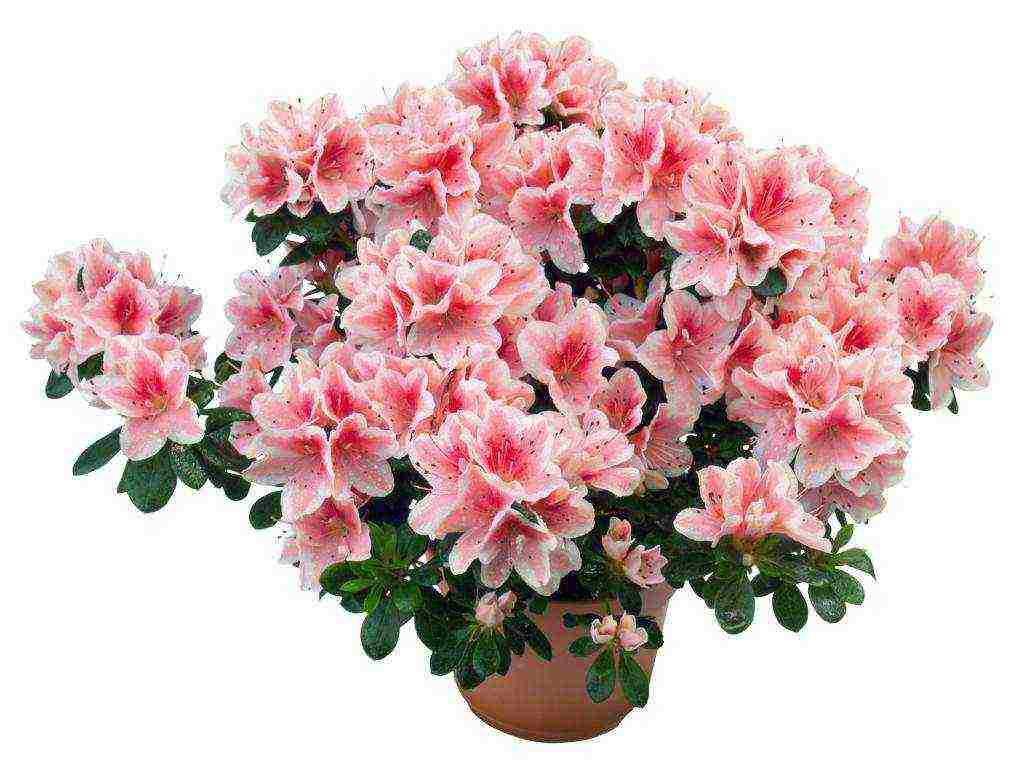 A common plant among flower lovers. It is famous for its lush and attractive flowering. The colors are very diverse: white, pink, red, yellow in azalea flowers. Azalea Simsa (Indian Azalea) is considered dangerous. Ingestion of the leaves of this flower causes intestinal colic and cramps.
A common plant among flower lovers. It is famous for its lush and attractive flowering. The colors are very diverse: white, pink, red, yellow in azalea flowers. Azalea Simsa (Indian Azalea) is considered dangerous. Ingestion of the leaves of this flower causes intestinal colic and cramps. - Mimosa bashful (Mimosa pudica).
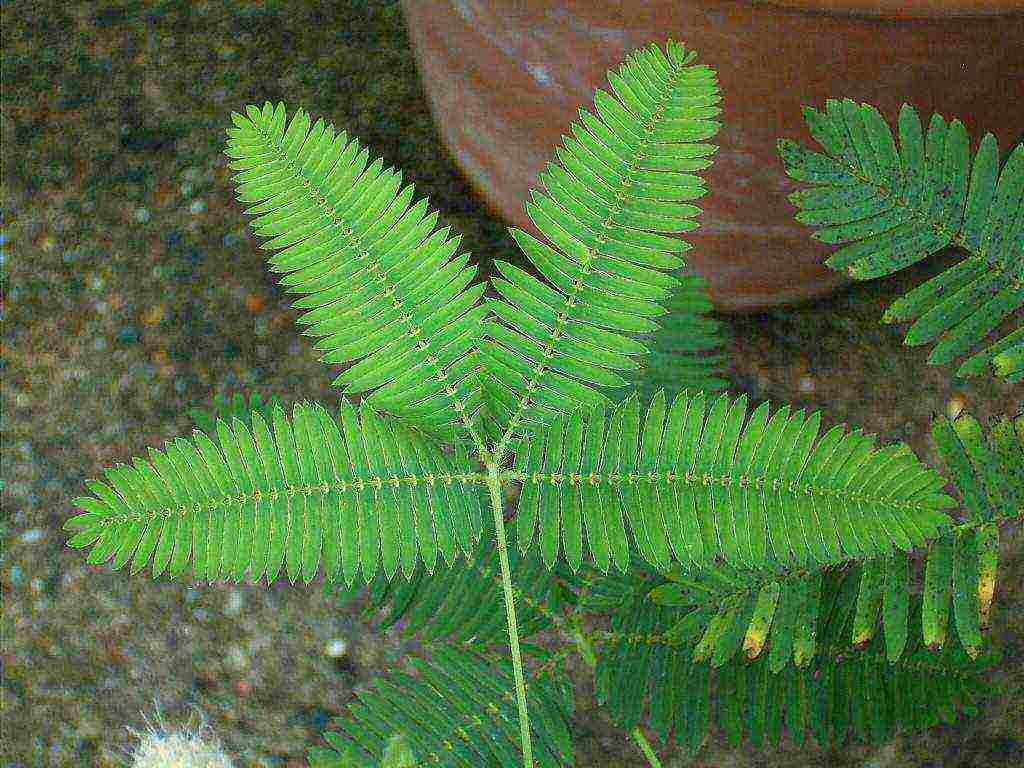 A bizarre plant that externally is represented by thin stems and small leaves. The leaves look fragile and delicate, and upon contact with an object, they curl up into a tube. Long-term human contact with these flowers leads to hair loss and loss.Sometimes it comes to complete baldness. The fact is that this plant emits harmful and toxic substances that poison the human body.
A bizarre plant that externally is represented by thin stems and small leaves. The leaves look fragile and delicate, and upon contact with an object, they curl up into a tube. Long-term human contact with these flowers leads to hair loss and loss.Sometimes it comes to complete baldness. The fact is that this plant emits harmful and toxic substances that poison the human body. - Evergreen ivy (Hedera).
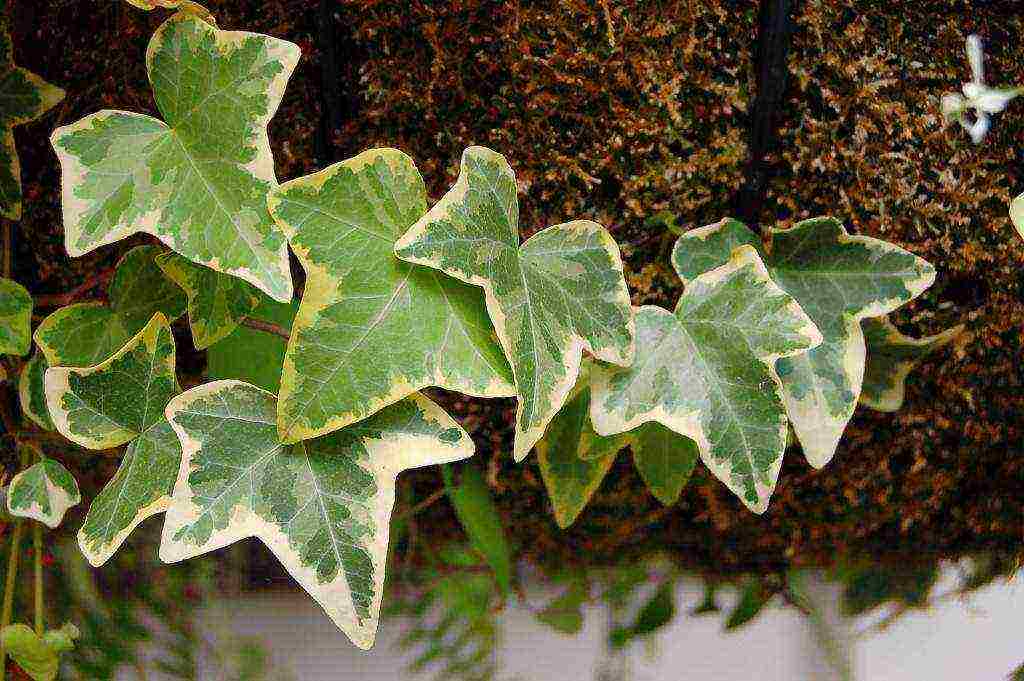 This plant belongs to the Araliaceae family. It is a shrub in the form of vines. Cats are very attracted to the bright green color of the leaves of this plant, but in ivy, the leaves and berries are poisonous, so the animal can die or be severely poisoned.
This plant belongs to the Araliaceae family. It is a shrub in the form of vines. Cats are very attracted to the bright green color of the leaves of this plant, but in ivy, the leaves and berries are poisonous, so the animal can die or be severely poisoned. - Adenium (Adenium).
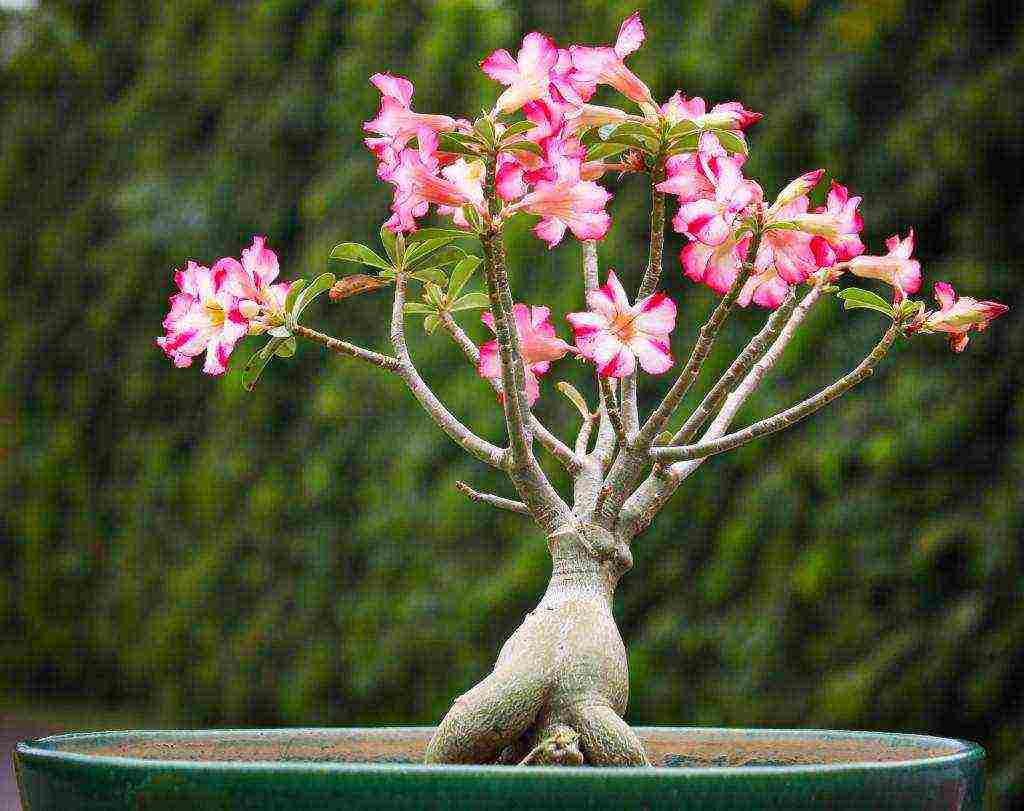 A very beautiful plant, which is represented by a thick, obese stem in the form of a small tree trunk. At the top are sparse leaves and a large number of medium-sized pink flowers. The plant is very toxic, adenium juice is especially dangerous. On contact with the body, it causes poisoning and burns.
A very beautiful plant, which is represented by a thick, obese stem in the form of a small tree trunk. At the top are sparse leaves and a large number of medium-sized pink flowers. The plant is very toxic, adenium juice is especially dangerous. On contact with the body, it causes poisoning and burns. - Monstera.

Monsterra is not a very dangerous plant, but still it is better not to start it at home.
A spectacular plant with huge leaves and growing to impressive sizes. Usually, monstera can be found in public places or botanical gardens. Monstera juice can cause burns on the skin, upset the digestive system, and if it gets into the eyes, damage them.
- Philodendron (Philodendron).
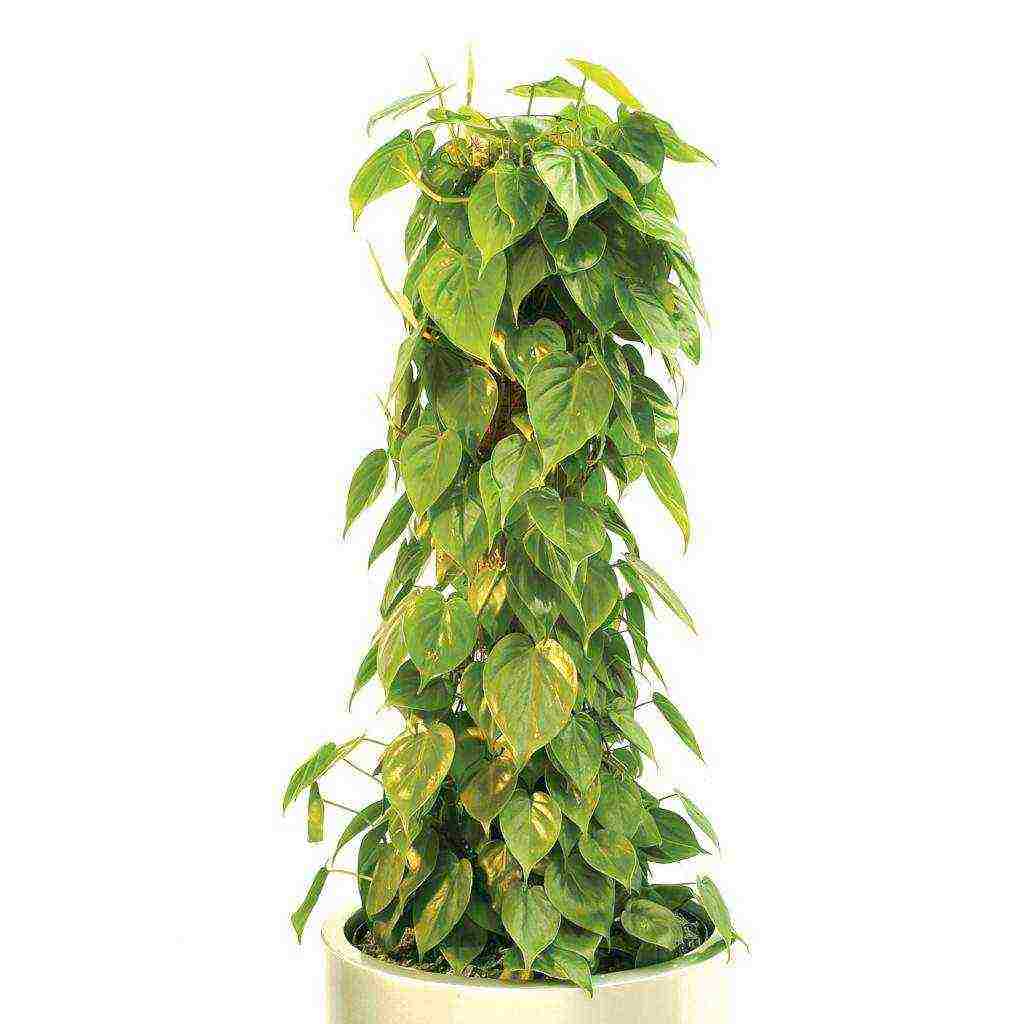 Belongs to the aroid family. The plant is represented by bushes, vines and lush greenery. Philodendron juice is poisonous. Contact with skin and eyes causes irritation and burns.
Belongs to the aroid family. The plant is represented by bushes, vines and lush greenery. Philodendron juice is poisonous. Contact with skin and eyes causes irritation and burns. - Primula (Primula).
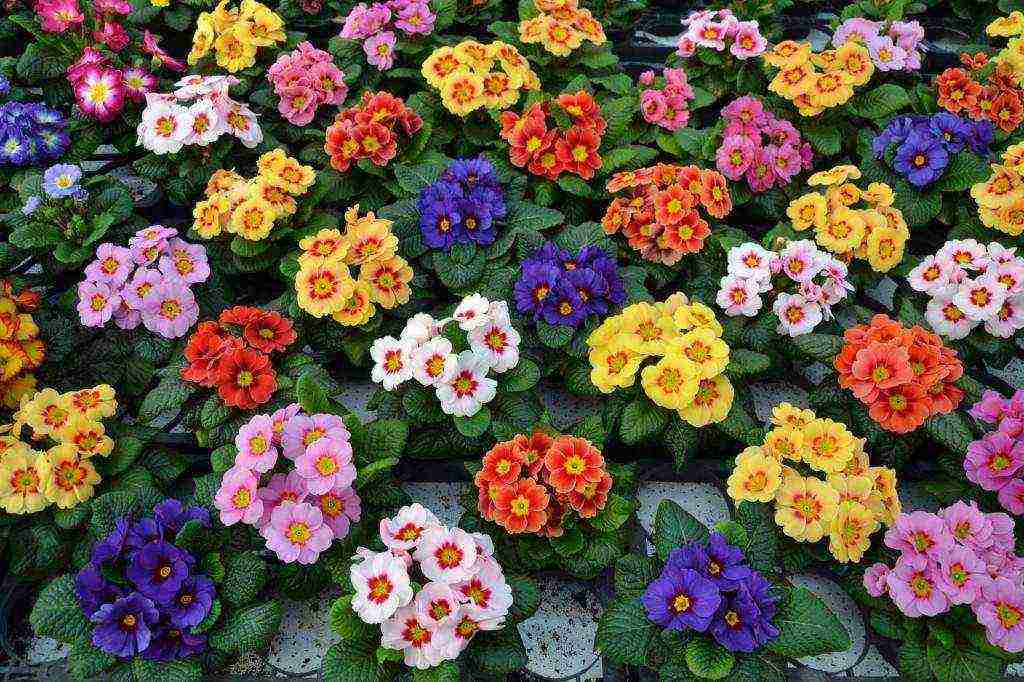 The flower has gained such popularity due to the beautiful flowering of various shades, small size and velvety leaves. During flowering, the plant releases toxic substances that cause nausea and dizziness. The velvety leaves are covered with small villi, contact with which leads to burning sensation and allergies.
The flower has gained such popularity due to the beautiful flowering of various shades, small size and velvety leaves. During flowering, the plant releases toxic substances that cause nausea and dizziness. The velvety leaves are covered with small villi, contact with which leads to burning sensation and allergies. - Stellera dwarf (Stellera chamaejasme).
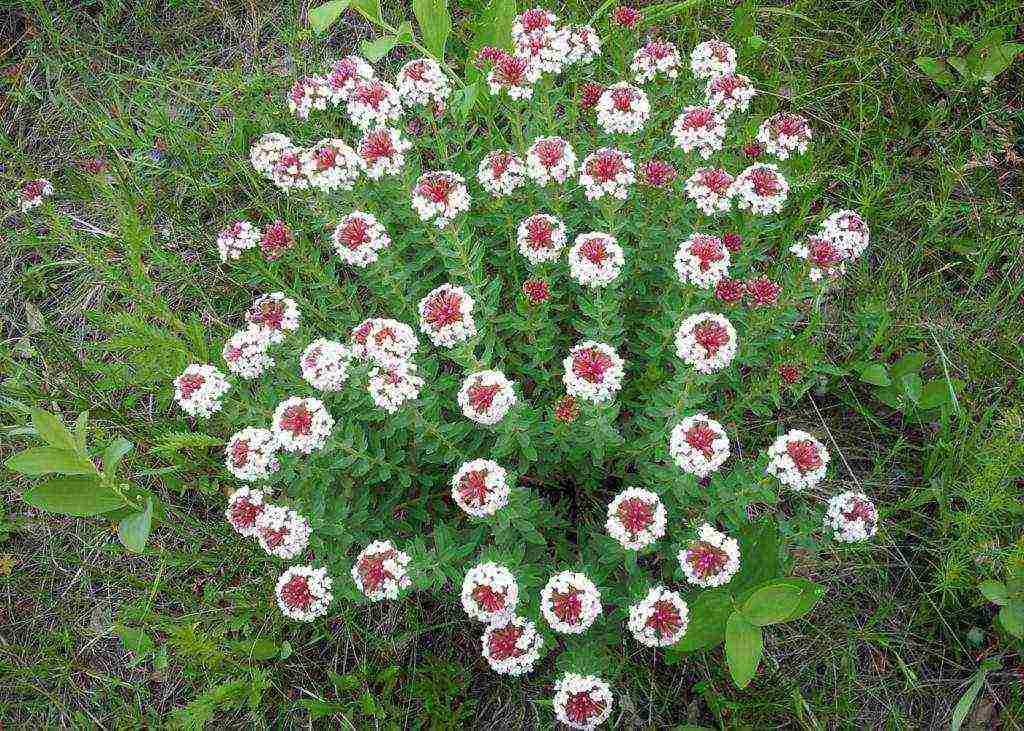 In the photo, Steller is in natural habitat. This plant is known for its medicinal properties, but it can only be used for such purposes under the supervision of a doctor. The flower itself has a high stem on which the inflorescences are located. They consist of 20-30 small white flowers. The ingestion of the leaves of the plant in its raw form into the body leads to swelling of the vocal cords and even numbness.
In the photo, Steller is in natural habitat. This plant is known for its medicinal properties, but it can only be used for such purposes under the supervision of a doctor. The flower itself has a high stem on which the inflorescences are located. They consist of 20-30 small white flowers. The ingestion of the leaves of the plant in its raw form into the body leads to swelling of the vocal cords and even numbness. - Nightshade (Solanum).
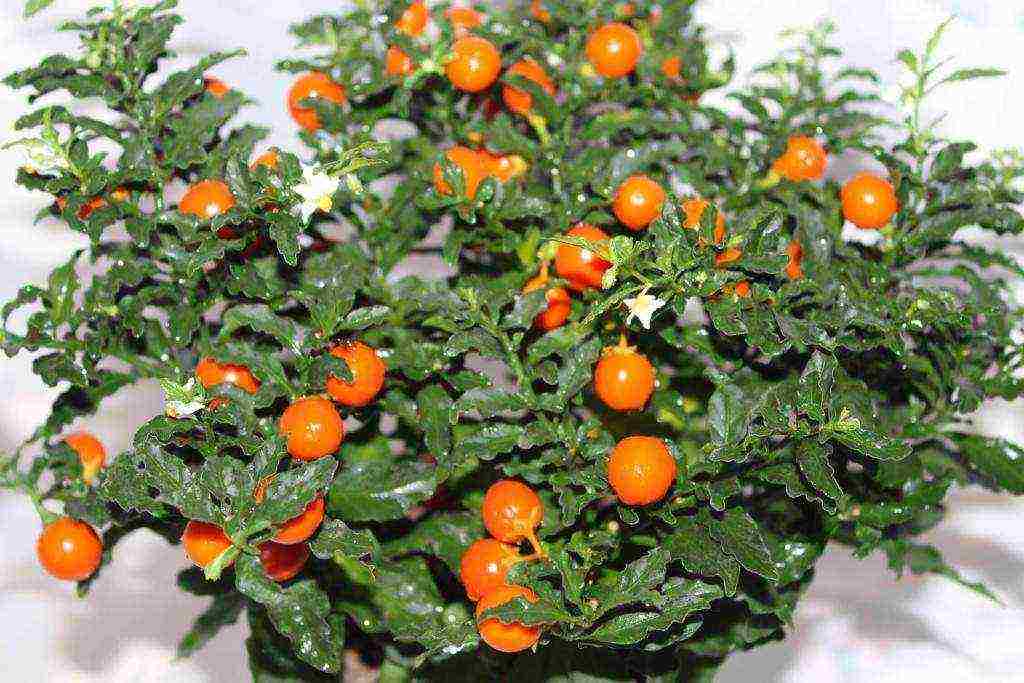 This flower attracts attention with its bright orange fruits, which adorn the evergreen shrub. It is these fruits that are very poisonous and dangerous. May cause poisoning. The bright color of the berries attracts children and animals, so you should not keep such a flower at home.
This flower attracts attention with its bright orange fruits, which adorn the evergreen shrub. It is these fruits that are very poisonous and dangerous. May cause poisoning. The bright color of the berries attracts children and animals, so you should not keep such a flower at home. - Tulip Gesner (Tulipa gesneriana).
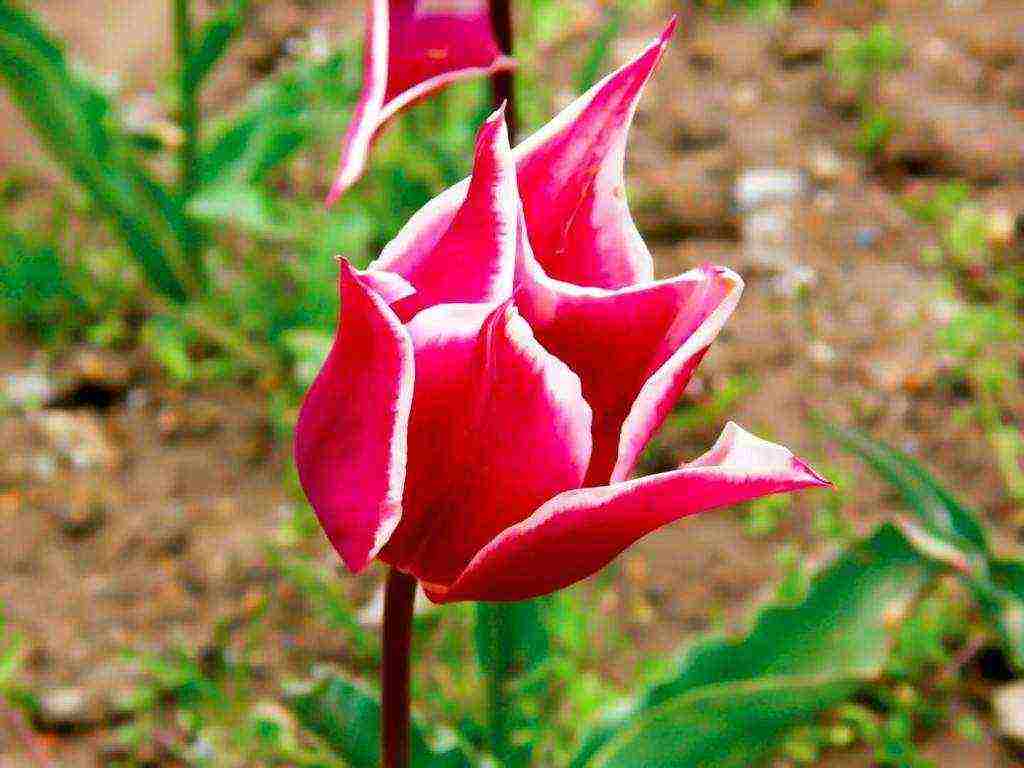 This plant blooms very impressively. It has a medium-sized stem on which a large flower is located. The color is varied - from yellow to red. But being with this flower for a long time indoors leads to hair loss and baldness.
This plant blooms very impressively. It has a medium-sized stem on which a large flower is located. The color is varied - from yellow to red. But being with this flower for a long time indoors leads to hair loss and baldness. - Trichocereus (Trichocereus).
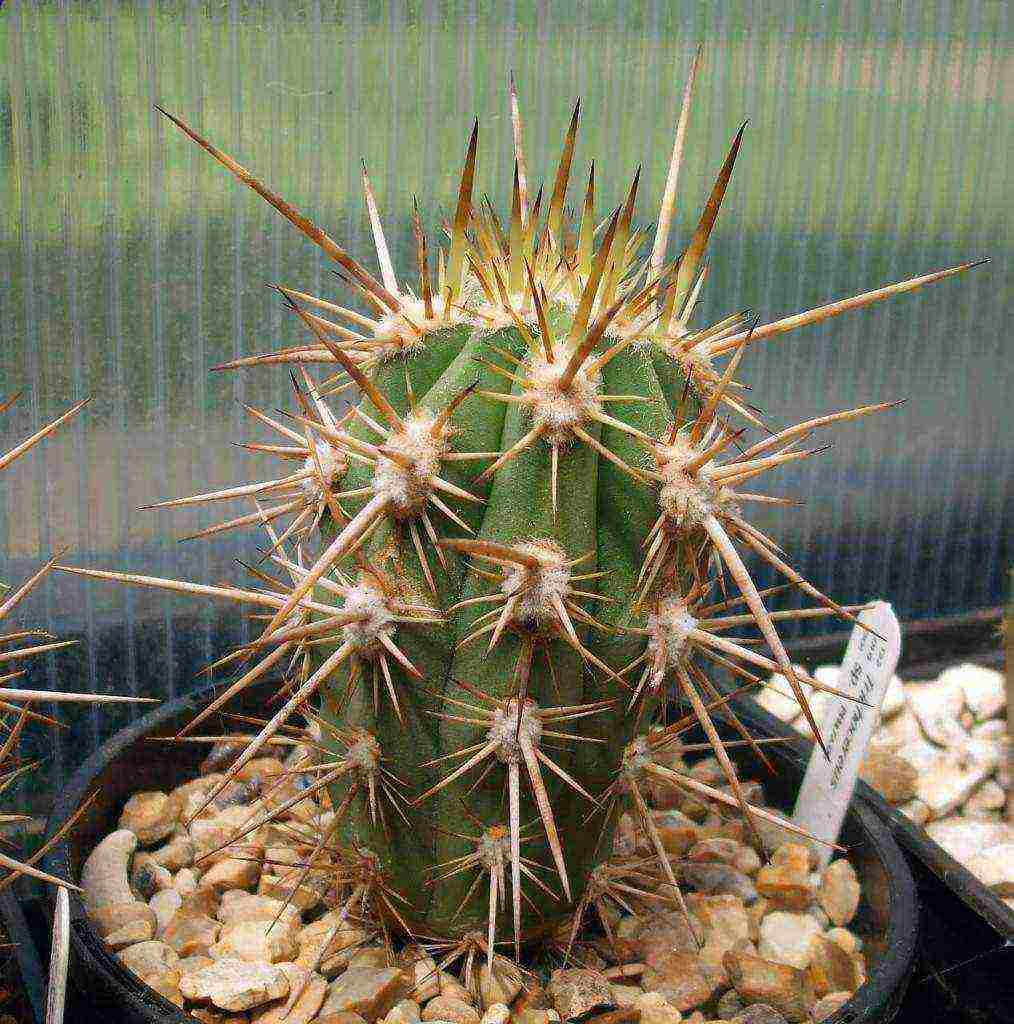 This plant is a species of cactus. It has long and large needles and blooms with large white flowers with a pleasant aroma. The plant contains hallucinogens and toxins that cause paralysis of the nervous system.
This plant is a species of cactus. It has long and large needles and blooms with large white flowers with a pleasant aroma. The plant contains hallucinogens and toxins that cause paralysis of the nervous system.
By families
The list of poisonous plants seems to be much longer, so when buying a flower, ask which family it belongs to. There are 4 main families of the most poisonous plants, namely:
- The euphorbia family. The juice of many members of this class is poisonous and causes burns on the skin.
- Aroid family. Most members of this group are toxic plants. Their juice is especially dangerous.
- A family of kurtovs. This class includes the most dangerous plants for human and animal life. They attract with their bright and variegated appearance. Wear gloves when working with this family of flowers.
- The nightshade family. In this class, far from all plants are poisonous, because the well-known potatoes and tomatoes belong to this family.But house flowers are most often toxic, and especially their fruits. Berries cause indigestion, nausea, vomiting.
Watch the video for details:
Sometimes indoor plants are not only beautiful, but also dangerous. For this reason, be sure to use protective equipment when working with flowers. If, in spite of everything, you decide to acquire such flowers, then try to protect them from possible contact with animals and children.
List of plants to be treated with caution
There are a number of indoor flowers that can harm the human body only if they are incorrectly positioned in the house. In addition, some plant species cause allergies or mild ailments. The list of these plants is as follows:
- Lily (Lilium).
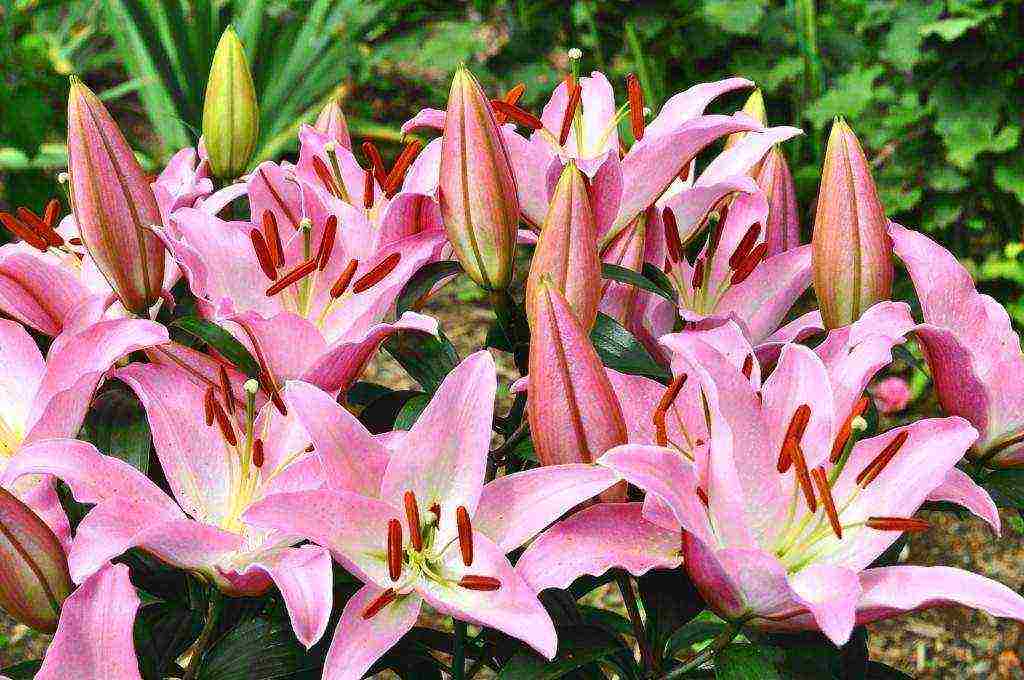 A flower loved by many with a tart aroma. It is because of this concentrated smell that they are not recommended to be kept in the bedroom, as they can cause insomnia. At night, lilies emit a lot of carbon dioxide, so in the morning you can wake up with a headache and tired.
A flower loved by many with a tart aroma. It is because of this concentrated smell that they are not recommended to be kept in the bedroom, as they can cause insomnia. At night, lilies emit a lot of carbon dioxide, so in the morning you can wake up with a headache and tired. - Ficus.
 A lush green plant with oblong leaves. Ficus is not very dangerous for humans, but it is capable of causing allergic reactions more than others.
A lush green plant with oblong leaves. Ficus is not very dangerous for humans, but it is capable of causing allergic reactions more than others. - Orchid (Orchidaceae).
 A beautiful plant with unusual flowering of various shapes and colors. It is better to place such a flower next to the workplace for the reason that it excites the nervous system. If you put an orchid in the bedroom, then it will lead to sleep disturbance.
A beautiful plant with unusual flowering of various shapes and colors. It is better to place such a flower next to the workplace for the reason that it excites the nervous system. If you put an orchid in the bedroom, then it will lead to sleep disturbance.
We have a whole section on the site dedicated to orchids. See if you can find a plant that suits you, they have beautiful flowers!
- Fern (Polypodiophyta).
Its action is similar to that of a lily. Fern gives off carbon dioxide at night, which leads to headaches in the morning. - Hydrangea (Hydrangea).
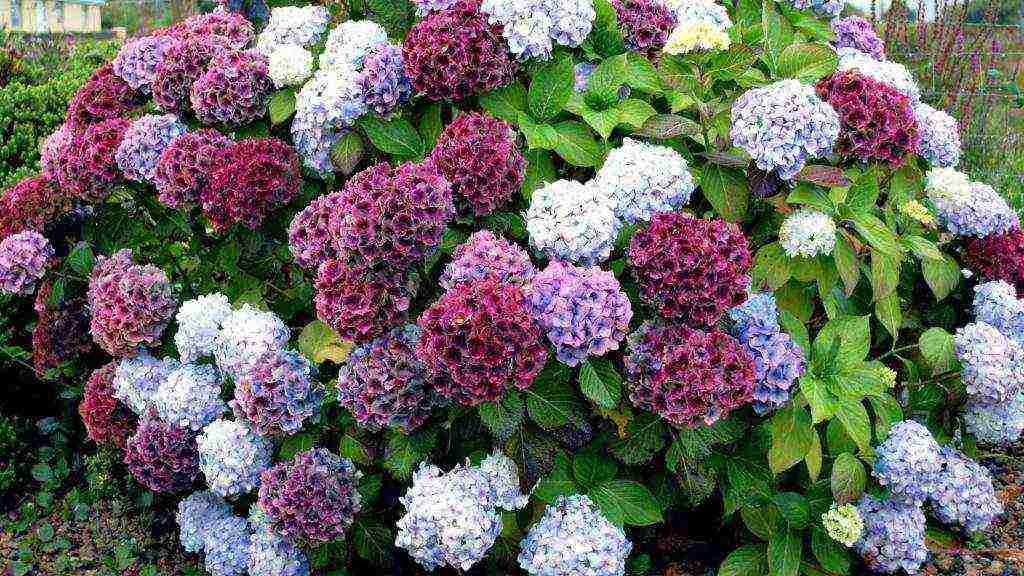 A flower that strikes with its inflorescence with a large number of small flowers forming a "cap". The color is varied from pink to blue shades. Hydrangea gives off particles that can cause allergies.
A flower that strikes with its inflorescence with a large number of small flowers forming a "cap". The color is varied from pink to blue shades. Hydrangea gives off particles that can cause allergies. - Tuberose (Polianthes tuberosa).
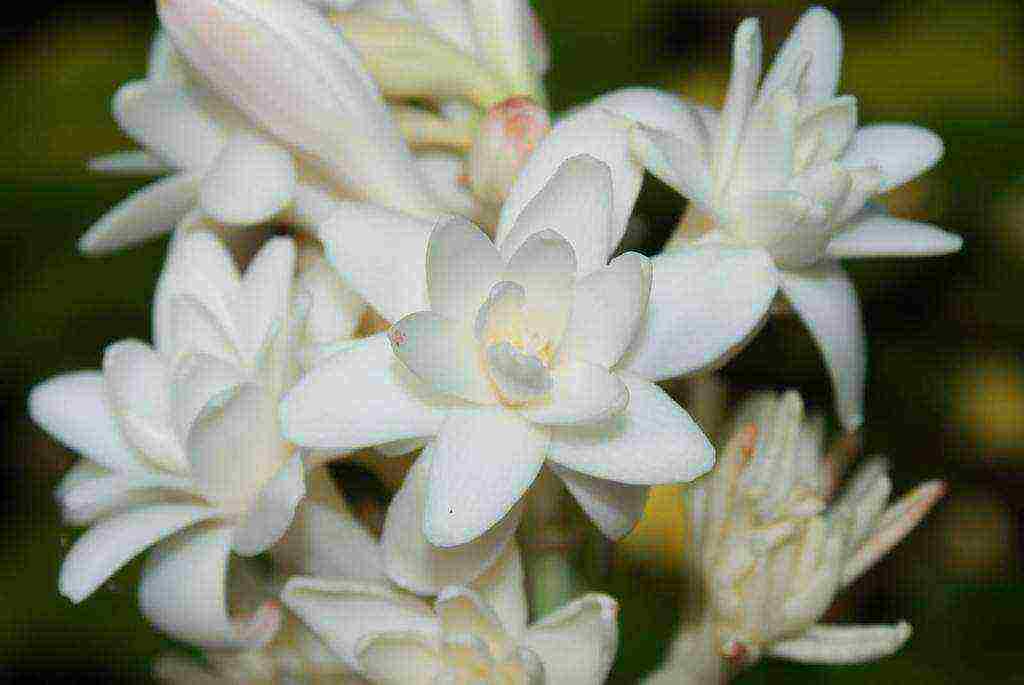 It is a perennial plant with a stem 45 cm high, white flowers form at the top. It has a very sweet and strong aroma. The plant secretes particles that greatly exacerbate the sense of smell. It is not recommended to keep such a flower for people with heart disease and hypertension. With such diseases, the scent of a flower can cause dizziness and mood loss, up to depressive states.
It is a perennial plant with a stem 45 cm high, white flowers form at the top. It has a very sweet and strong aroma. The plant secretes particles that greatly exacerbate the sense of smell. It is not recommended to keep such a flower for people with heart disease and hypertension. With such diseases, the scent of a flower can cause dizziness and mood loss, up to depressive states.
All flowers with a strong aroma should be placed in a well-ventilated area. Then there will be no problems with feeling unwell.
Folk signs: what is possible, what is not?
To trust folk omens or not is a personal matter for everyone. At the same time, it is worth remembering that most often signs arise on the basis of long-term observations of ancestors. Consider what the appearance of some indoor plants in the house entails:
 Cacti are unfavorable plants for the home. It is believed that the presence of a cactus in the apartment turns the husband into a person suffering from alcoholism. There is a second sign, which says that in a house where there is a cactus, a girl will not marry happily or will not meet a chosen one at all. Also, cactus has a bad effect on relationships between family members.
Cacti are unfavorable plants for the home. It is believed that the presence of a cactus in the apartment turns the husband into a person suffering from alcoholism. There is a second sign, which says that in a house where there is a cactus, a girl will not marry happily or will not meet a chosen one at all. Also, cactus has a bad effect on relationships between family members. - Ferns take vitality from a person, being an energy vampire. In a house with a fern, a person will feel constantly tired, inactive, sleepy.
- Ivy and climbing plants, according to folk signs, scare men away. In a house where there are such plants, a man will constantly strive to go somewhere. In addition, ivy negatively affects the state of mind, depriving a person of optimism and balance. It is best to keep these plants outside the house.So, ivy will act as a protector.
- Dieffenbachia is dangerous for its poisonous properties, and also takes health away from the household.
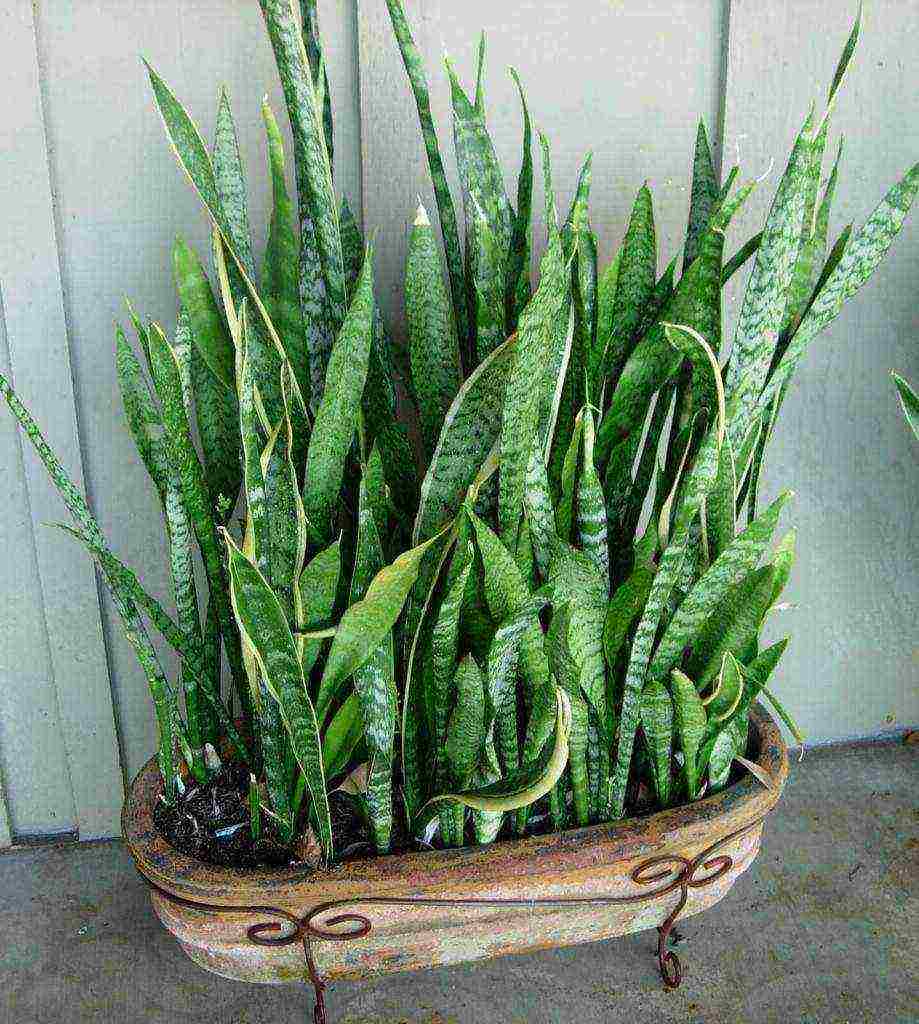 Mother-in-law's tongue is a plant that has practically no stem, with elongated longitudinal leaves with a bright green color. It is believed that the presence of such a flower in the house leads to loneliness and the inability of the girl to get married. The plant has a negative effect on feminine strength, so it is dangerous to keep it in the bedroom. The flower, as it were, "drives" men out of the house.
Mother-in-law's tongue is a plant that has practically no stem, with elongated longitudinal leaves with a bright green color. It is believed that the presence of such a flower in the house leads to loneliness and the inability of the girl to get married. The plant has a negative effect on feminine strength, so it is dangerous to keep it in the bedroom. The flower, as it were, "drives" men out of the house.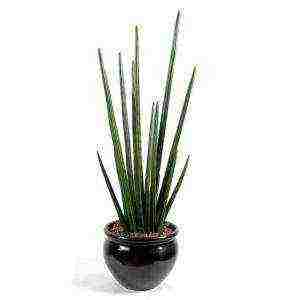 Sansevieria is a curious plant that looks like the tail of a fish. For this reason, it is also nicknamed the "pike tail". The leaves of the flower, painted green, have such a bizarre shape. The plant blooms and has a pleasant aroma. But, according to the signs, it negatively affects family and personal life. The presence of this flower in the house leads to loneliness.
Sansevieria is a curious plant that looks like the tail of a fish. For this reason, it is also nicknamed the "pike tail". The leaves of the flower, painted green, have such a bizarre shape. The plant blooms and has a pleasant aroma. But, according to the signs, it negatively affects family and personal life. The presence of this flower in the house leads to loneliness. - The palm tree often decorates the interiors of many rooms, but it is better not to put such a flower at home. The palm tree contributes to the appearance of grief in the family, if it was presented to you. Save this plant for office spaces or other locations.
- Ficus can cause allergies, but in addition, it is believed that the flower negatively affects the appearance of children in the house. If you want a child, then this plant is not worth purchasing. Ficus has long been controversial. There is a completely opposite opinion about this plant. It says that ficus solves the problem of infertility and contributes to family well-being.
Related videos:
When organizing a flower corner in an apartment or landscaping your home, choose the flowers that best suit you based on your lifestyle, the appearance of the flower and its properties.
Feng Shui
In Feng Shui, it is important to pay attention not only to the type of flower, but also to the state in which it is. There are several basic rules for keeping flowers and plants in the house according to Feng Shui:
- You should not keep dried flowers in the apartment.
- All old plants that no longer bloom and do not give young shoots should be thrown away.
- Sick flowers should not be kept in the house, as they will take away your health.
- A flower that you take care of for a long time, but all actions are useless, and it withers, should also be removed from the house. The plant spreads negative energy.
- It is worth choosing those flowers, the leaves of which are directed upwards. According to Feng Shui, such plants bring positive energy to the house. Plants with leaves that stretch down, on the contrary, land it.
- It is better to choose flowers with a rounded leaf shape.
- You shouldn't have a lot of plants in the bedroom and next to the bed.
- According to Feng Shui, all plants are divided into female and male (Yin and Yang). Women include begonia, violet, fat woman, cyclamen. Citrus fruits, dracaena, chlorophytum and others are considered male plants.
- For the most favorable energy field in the house, it is necessary to keep the Yin and Yang plants.
According to the rules of Feng Shui, there are no favorable or unfavorable types of flowers, but some are still not worth buying for keeping in the house. All plants with poor energy include those that have sharp leaves. It is believed that such flowers bring quarrels and discord to the family. Needles and thorns also provoke scandals, so you should choose plants with soft needles. The main plant that is not recommended to grow in Feng Shui at home is bonsai.
It is a dwarf tree whose growth has been artificially stopped. Such a tree will stop the development of its owner, negatively affect career success and general well-being.
List of Recommended Plants
For good energy in Feng Shui, it is recommended to grow the following flowers:
- Money tree - brings prosperity to the house in the material sense. In another way it is called "fat woman". It is recommended to plant such a tree with your own hands, and put a coin on the bottom of the pot.
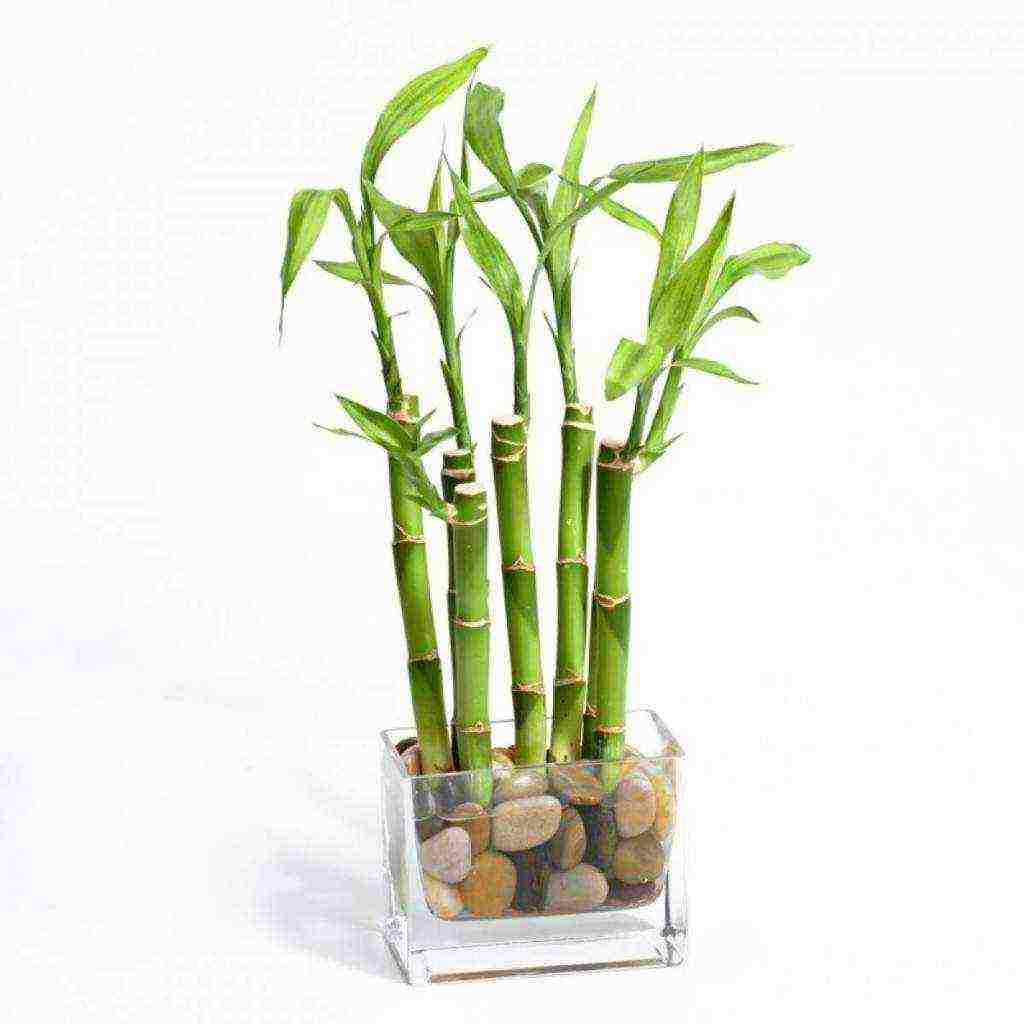 Bamboo absorbs bad energy and turns it into positive energy.
Bamboo absorbs bad energy and turns it into positive energy. 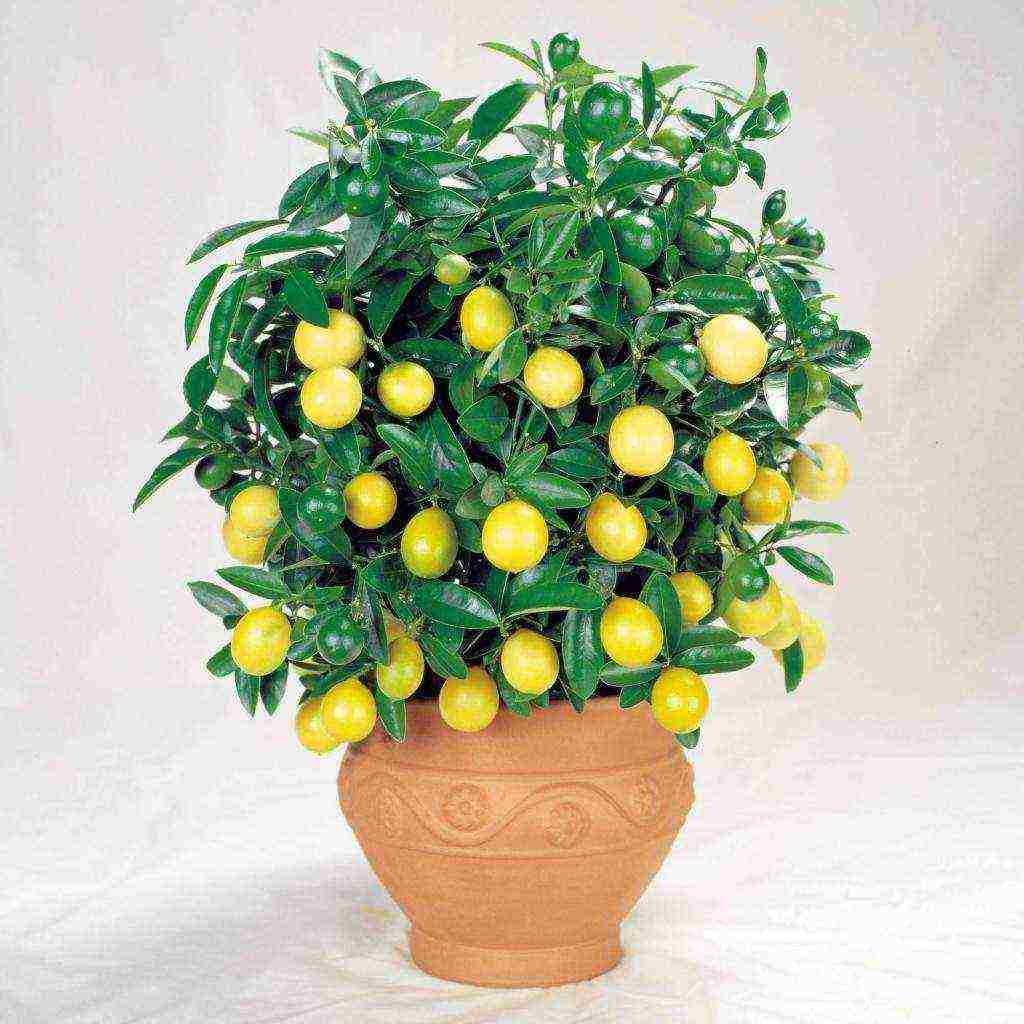 The lemon tree can increase activity and independence.
The lemon tree can increase activity and independence.- Ficus should be placed anywhere in the house, but not in the bedroom. If this plant is in the bedroom, then the relationship between the spouses may deteriorate. It is believed that ficus relieves aggression and neutralizes negative energy.
- Geraniums also cannot be placed next to the bed and in the bedroom. According to Feng Shui, it is believed that this flower secretes essential oils that soothe the nervous system and improve metabolism. But excessive inhalation of these oils causes allergies and headaches.
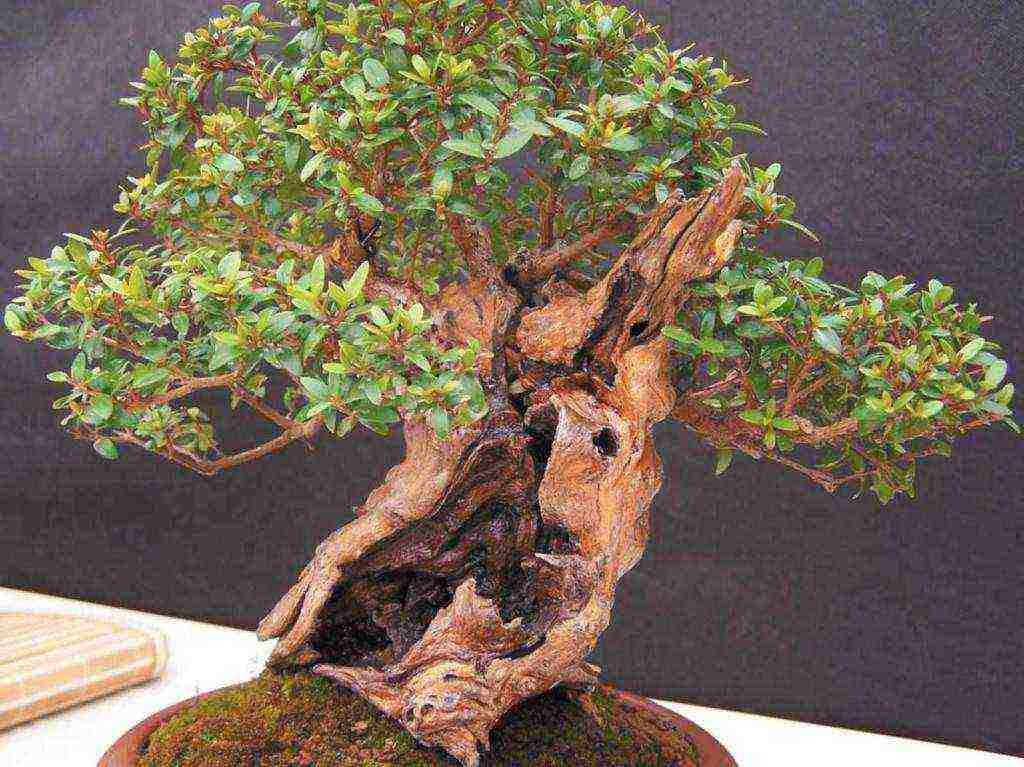 The myrtle tree can improve the relationship in marriage. Promotes harmony in family life and revitalization of relationships.
The myrtle tree can improve the relationship in marriage. Promotes harmony in family life and revitalization of relationships. - The cactus has a heavy energy, but it can reduce irritability and rage. Recommended for people with a hot temperament.
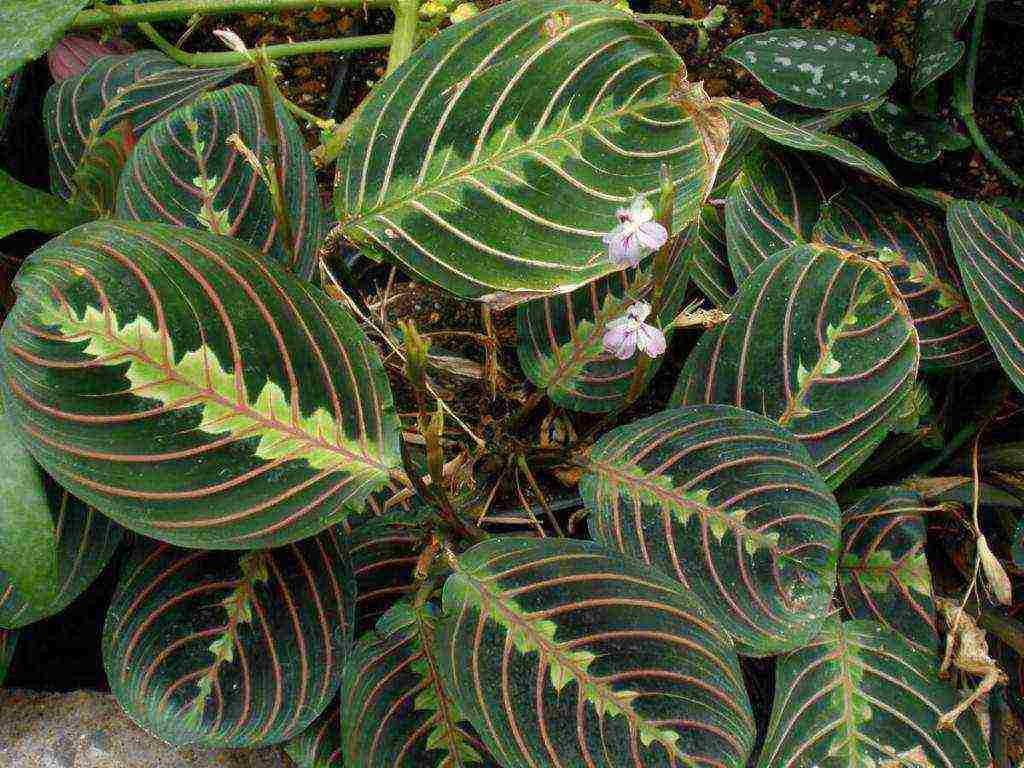 Arrowroot, poinsettia help those who have lost it to find the meaning of life and find professional harmony.
Arrowroot, poinsettia help those who have lost it to find the meaning of life and find professional harmony.
Videos about plants and feng shui:
Conclusion
In conclusion, I would like to say that the choice of indoor plants is more dependent on your personal preferences. Observe safety precautions when handling poisonous flowers. Do not forget about their danger to children and animals.

